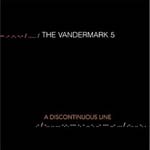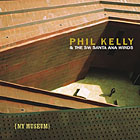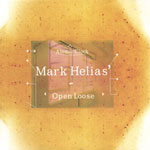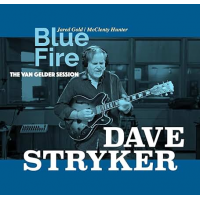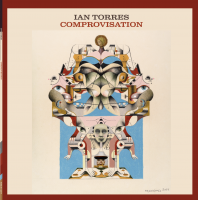Home » Jazz Articles » Album Review » The Vandermark 5: A Discontinuous Line
The Vandermark 5: A Discontinuous Line
Blasphemy it may be to suggest such a thing, but the new lineup may well be a more balanced one. With two horns, two strings and percussion, there's plenty of texture available. But the replacement of Bishop's always expressive trombone has created a sound that, while also capable of aggressive extremes as ever, enables a greater delicacy—beauty, even.
On "La Dernier Cri, Tim Daisy's soft tympani-like mallet work on the toms creates a persistent undercurrent of rhythm. The piece starts with cued chords built amongst Vandermark, Lonberg-Holm, saxophonist Dave Rempis and bassist Kent Kessler. Were it not for Daisy, the piece would feel very Ligeti-like, although when it shifts into collective improvisation which treats space as an equal component, the reference dissolves. The beauty of Vandermark's writing, however, is the purposeful direction of such free improvisation: small, clearly constructed figures emerge and disappear, never to be heard from again. By the time Lonberg-Holm's brief solo is over, the group reunites for a coda related to the intro, but not any kind of restatement.
The new Vandermark 5 hasn't lost its edge. Lonberg-Holm lends ardent chordal support beneath Rempis' outré solo on "Convertible, Version One. In tandem with Kessler's arco bass, he builds a solo conception that's completely new to the group. Vandermark's cathartic baritone solo is driven in ways that would not have been possible with the old lineup, finally returning to the tune's repetitive 5/4 motif alongside Rempis, while Lonberg-Holm, Kessler and Daisy end the piece on a maelstrom-like note.
Vandermark pushes the envelope, but the swinging swagger on "Some Not All refers to the jazz tradition, despite a chamber-like intro that's equally informed by contemporary classicism. Lonberg-Holm's solo of reckless abandon, over which Vandermark and Rempis ultimately enter to signal a return to the lead-in figure, shifts to a rock-ish solo section for Rempis, where Lonberg-Holm's repeated 5/4 figure seamlessly segues into a 7/4 pattern. Complexity never felt this natural or inevitable.
Vandermark's biggest strength as a writer is his ability to create compositions that mesh challenging and sometimes long-form structure with freewheeling improvisation. The Color of Memory may have been a high-water mark for the original V5 lineup, but A Discontinuous Line signals a shift for a group that's just as compelling.
Track Listing
Convertible, Version One (for Charles Eames); Reciprocal (for Santiago Calatrava); La Dernier Cri (for Elliot Carter); Some Not All (for Phillip Wilson); Aperture (for Walker Evans); Morricone (for Sergio Leone); Convertible, Version Two (for Ray Eames); The Ladder (for Giorgio De Chirico).
Personnel
Ken Vandermark: baritone saxophone, Bb clarinet, bass clarinet; Dave Rempis: alto and tenor saxophones; Fred Lonberg-Holm: cello; Kent Kessler: bass; Tim Daisy: drums.
Album information
Title: A Discontinuous Line | Year Released: 2006 | Record Label: Atavistic Worldwide
Tags
PREVIOUS / NEXT
Support All About Jazz
 All About Jazz has been a pillar of jazz since 1995, championing it as an art form and, more importantly, supporting the musicians who make it. Our enduring commitment has made "AAJ" one of the most culturally important websites of its kind, read by hundreds of thousands of fans, musicians and industry figures every month.
All About Jazz has been a pillar of jazz since 1995, championing it as an art form and, more importantly, supporting the musicians who make it. Our enduring commitment has made "AAJ" one of the most culturally important websites of its kind, read by hundreds of thousands of fans, musicians and industry figures every month.


